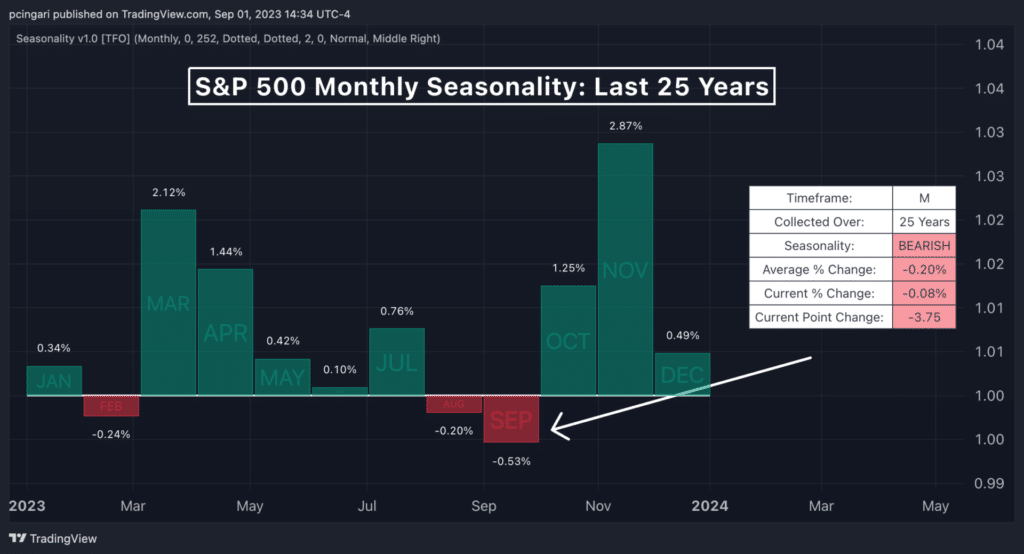The Ultimate Guide to Swing Trading Options
The Ultimate Guide to Swing Trading Options
Introduction to Swing Trading Options

Swing trading options is a powerful strategy that options traders use to capitalize on short- to medium-term price movements in the options market. Unlike day trading, swing trading options typically involves holding options positions for several days to weeks. This approach to options trading allows options traders to profit from market volatility without constant market monitoring. Options offer leverage and flexibility, making them ideal instruments for swing trading strategies.
In this comprehensive guide to swing trading options, we’ll explore the intricacies of this options trading strategy. We’ll cover what swing trading options entails, how it works, key options trading techniques, and the tools that successful options traders use to execute profitable trades. Whether you’re new to options trading or an experienced trader looking to refine your swing trading options strategies, this guide provides valuable insights into the world of swing trading options.
What is Swing Trading Options?
Swing trading options is a method of options trading that involves taking positions in options contracts to profit from price swings in the underlying asset. Options traders who engage in swing trading aim to capitalize on both upward and downward market movements. The versatility of options trading allows traders to profit in both rising and falling markets through the use of call and put options.
In swing trading options, traders rely heavily on technical analysis to identify trends, support and resistance levels, and potential reversal patterns. The primary goal of swing trading options is to identify the beginning of a price swing and maintain the options position until the trend shows signs of reversal. This approach to options trading requires a deep understanding of both options mechanics and market dynamics.
The Role of Call and Put Options in Swing Trading
Options trading revolves around two main types of contracts: call options and put options. Understanding these is crucial for successful swing trading options:
- Call Options in Swing Trading: A call option gives the holder the right (but not the obligation) to buy the underlying asset at a predetermined strike price before the expiration date. In swing trading options, traders often use call options when they anticipate upward price movements.
- Put Options in Swing Trading: A put option gives the holder the right to sell the underlying asset at a set strike price before expiration. In swing trading options strategies, traders typically use put options when they expect downward price movements.
Example of Swing Trading Options with Calls
Consider a scenario where an options trader anticipates that Stock ABC, currently trading at $50, will rise to $55 in the coming weeks. The trader might implement a swing trading options strategy by purchasing a call option with a $50 strike price and an expiration date that aligns with the expected holding period. As Stock ABC’s price rises towards $55, the call option’s value increases, allowing the options trader to sell the option for a profit before expiration.
Example of Swing Trading Options with Puts
In another swing trading options scenario, an options trader expects Stock XYZ, currently priced at $75, to decline to $70. The trader could execute a swing trading options strategy by buying a put option with a $75 strike price. If Stock XYZ’s price falls to $70 as anticipated, the put option’s value increases, enabling the options trader to sell the option at a profit.
How Swing Trading Options Works
Identifying Swing Trading Options Opportunities
The key to successful swing trading options is identifying potential price swings in the underlying asset. Options traders engaged in swing trading use various technical analysis tools to predict price direction changes. These tools include moving averages, trendlines, and chart patterns. By entering trades at the beginning of a price swing and exiting before trend reversal, swing trading options strategies aim to capture the bulk of the movement.
Example of Identifying a Swing Trading Options Opportunity
Consider Stock DEF in an uptrend that temporarily pulls back to a support level. An options trader focused on swing trading options might identify this as a buying opportunity, expecting the uptrend to resume after the pullback. The trader could implement a swing trading options strategy by buying call options, aiming to profit from the anticipated continuation of the uptrend.
Timing Entry and Exit Points in Swing Trading Options
In swing trading options, timing is critical. Options traders use technical indicators to time their entry and exit points effectively. Some of the most commonly used indicators in swing trading options include:
- Relative Strength Index (RSI): The RSI helps options traders identify overbought and oversold conditions. In swing trading options, an RSI below 30 might signal a potential buying opportunity for call options, while an RSI above 70 could indicate a potential opportunity for put options.
- Moving Averages: Moving averages smooth out price data to show the overall market direction. In swing trading options, traders often use the 50-day and 200-day moving averages to identify trends. A price crossing above a moving average might signal a buying opportunity for call options, while a price crossing below could indicate a chance to buy put options.
Managing Risk in Swing Trading Options
Swing trading options involves risk, particularly due to market volatility and time decay (Theta). Since options lose value as they approach expiration, options traders engaged in swing trading must balance their trade’s time horizon with the option’s expiration date. To manage risk in swing trading options, traders often set stop-loss orders and use proper position sizing.
Example of Using a Stop-Loss Order in Swing Trading Options
An options trader implementing a swing trading options strategy buys a call option on a stock at $50, expecting the price to rise. To manage risk, the trader sets a stop-loss order at $48. If the stock falls to $48, the stop-loss order triggers, closing the trade and limiting losses. This risk management technique is crucial in swing trading options to protect against significant losses.
Swing Trading Options Strategies
Trend Following with Options
Trend following is a popular strategy in swing trading options. Options traders identify the overall trend direction and enter trades accordingly. In an uptrend, traders engaged in swing trading options typically buy call options, while in a downtrend, they buy put options.
Example of Trend Following in Swing Trading Options
If a stock shows a clear uptrend, an options trader might wait for a pullback and then buy call options, expecting the stock to resume its upward movement. This swing trading options strategy aims to profit from the continuation of the established trend.
Breakout Trading with Options
Breakout trading in swing trading options involves entering a trade when the price breaks through a key support or resistance level. Options traders capitalize on the momentum that follows a breakout, buying call options if the price breaks above resistance or put options if the price breaks below support.
Example of Breakout Trading in Swing Trading Options
If a stock has been trading between $50 and $55 for several weeks, an options trader might buy call options once the price breaks above $55, anticipating that the stock will continue to rise. This swing trading options strategy seeks to profit from the potential strong move following the breakout.
Reversal Trading with Options
Reversal trading is a strategy in swing trading options that involves entering trades when a trend shows signs of reversing. Options traders look for reversal patterns such as head-and-shoulders, double tops, or bottoms, and divergences in momentum indicators like the RSI or MACD.
Example of Reversal Trading in Swing Trading Options
If a stock has been in a downtrend, but the RSI shows a bullish divergence, an options trader might buy call options in anticipation of a reversal to the upside. This swing trading options approach aims to catch the beginning of a new trend.
Straddle and Strangle Strategies in Swing Trading Options
Options traders can also use neutral strategies like the straddle or strangle in their swing trading options approach. These strategies involve buying both call and put options and profit from significant price movement in either direction.
- Straddle in Swing Trading Options: In a straddle, options traders buy both a call option and a put option at the same strike price. This swing trading options strategy profits from large price swings in either direction, making it ideal for highly volatile markets.
- Strangle in Swing Trading Options: In a strangle, options traders buy a call option and a put option with different strike prices. This strategy in swing trading options is also designed to profit from large price movements but with less cost than a straddle.
Tools and Indicators for Swing Trading Options
Moving Averages in Swing Trading Options
Moving averages are essential tools for options traders engaged in swing trading. They help smooth out price data and provide a clear indication of the overall trend. In swing trading options, traders commonly use the 50-day and 200-day moving averages to determine the market direction.
Relative Strength Index (RSI) in Swing Trading Options
The RSI is a momentum oscillator that measures the speed and change of price movements. It ranges from 0 to 100, with readings above 70 indicating overbought conditions and readings below 30 indicating oversold conditions. In swing trading options, traders use the RSI to identify potential reversal points in the market.
Bollinger Bands in Swing Trading Options
Bollinger Bands are volatility bands plotted two standard deviations above and below a moving average. In swing trading options, traders use Bollinger Bands to identify overbought and oversold conditions, as well as potential breakout opportunities.
MACD (Moving Average Convergence Divergence) in Swing Trading Options
The MACD is a trend-following momentum indicator that shows the relationship between two moving averages. In swing trading options, traders use the MACD to identify changes in the strength, direction, momentum, and duration of a trend.
Advantages and Disadvantages of Swing Trading Options
Advantages of Swing Trading Options
- Flexibility: Swing trading options allows traders to capitalize on short- to medium-term price movements without constant market monitoring.
- Leverage: Options provide leverage, allowing traders engaged in swing trading options to control large positions with relatively small capital outlays.
- Profit in Any Market Condition: With call and put options, swing trading options strategies can profit from both rising and falling markets.
Disadvantages of Swing Trading Options
- Time Decay: Options lose value as they approach expiration, making timing crucial for options traders engaged in swing trading.
- Market Exposure: Holding options overnight in swing trading options strategies exposes traders to gaps and news events that can impact the market.
- Complexity: Options trading, including swing trading options, involves complex strategies and requires a solid understanding of options pricing and risk management.
Conclusion: Mastering Swing Trading Options
Swing trading options is a flexible and powerful strategy that allows options traders to capture price movements in both rising and falling markets. By combining technical analysis, trend-following techniques, and robust risk management, options traders can optimize their chances of success in swing trading options. Whether you’re new to options trading or looking to refine your strategies, this ultimate guide to swing trading options provides the foundation you need to navigate the options market with confidence.
Check out our articles on:
- Introduction to Options Trading
- Mastering Butterfly Spreads
- The Power of Diagonal Spreads
- The Power of Iron Condors
- The Power of Vertical Credit Spreads
Elevate Your Swing Trading Options Skills
Ready to master swing trading options? Join our community for in-depth education on options trading, live trading sessions, and expert analysis of swing trading options strategies. Sign up today to start profiting from market swings using advanced options trading strategies!
Below are the links:
To your success,

Billy Ribeiro is a renowned name in the world of financial trading, particularly for his exceptional skills in options day trading and swing trading. His unique ability to interpret price action has catapulted him to global fame, earning him the recognition of being one of the finest price action readers worldwide. His deep comprehension of the nuances of the market, coupled with his unparalleled trading acumen, are widely regarded as second to none.
Connect with us:






